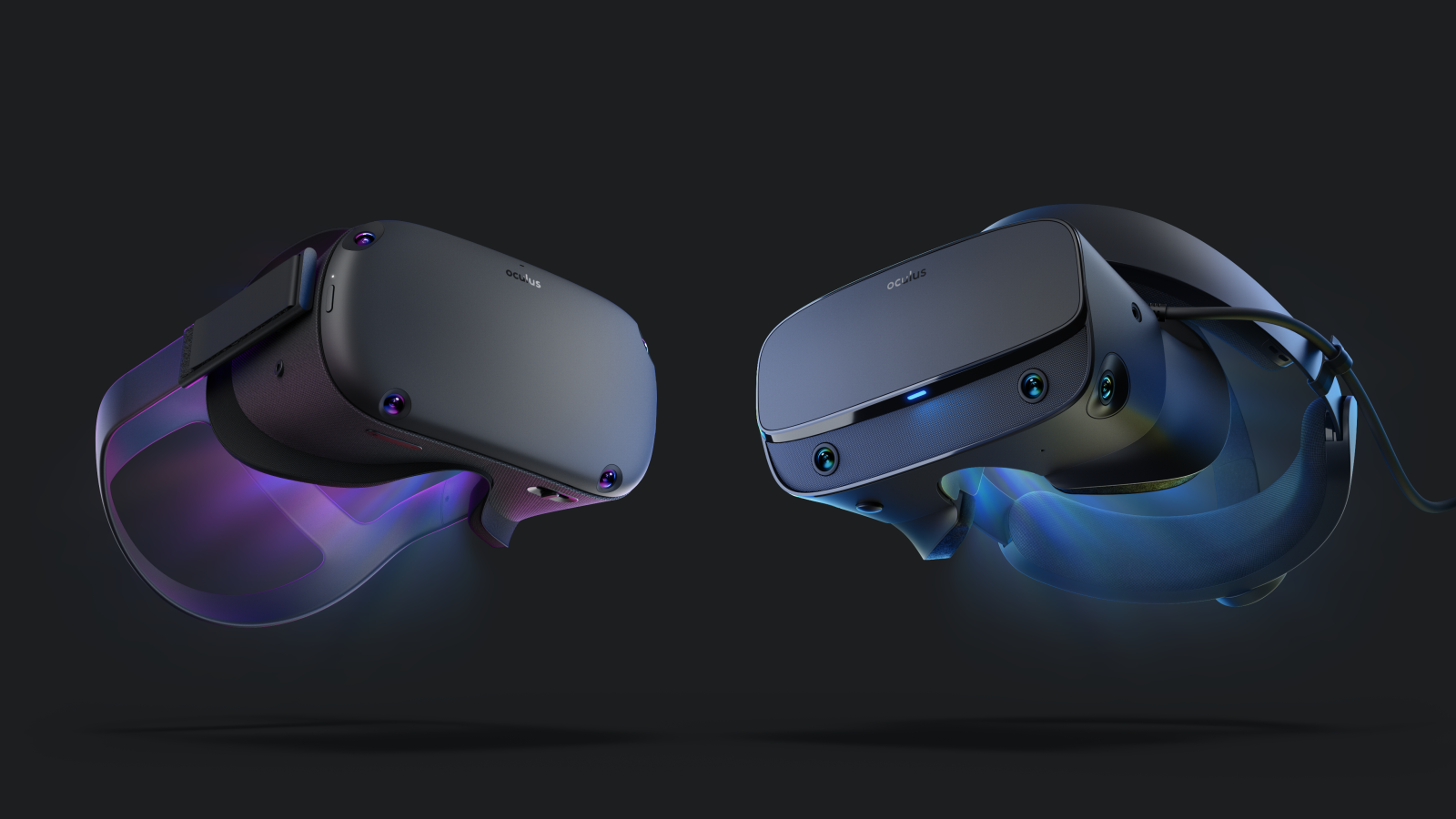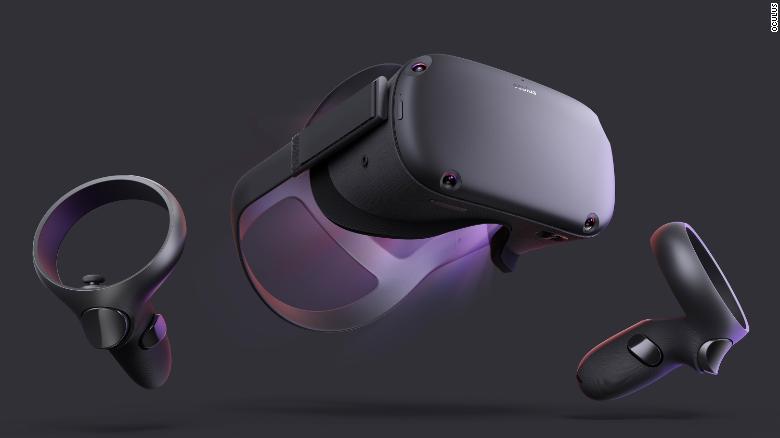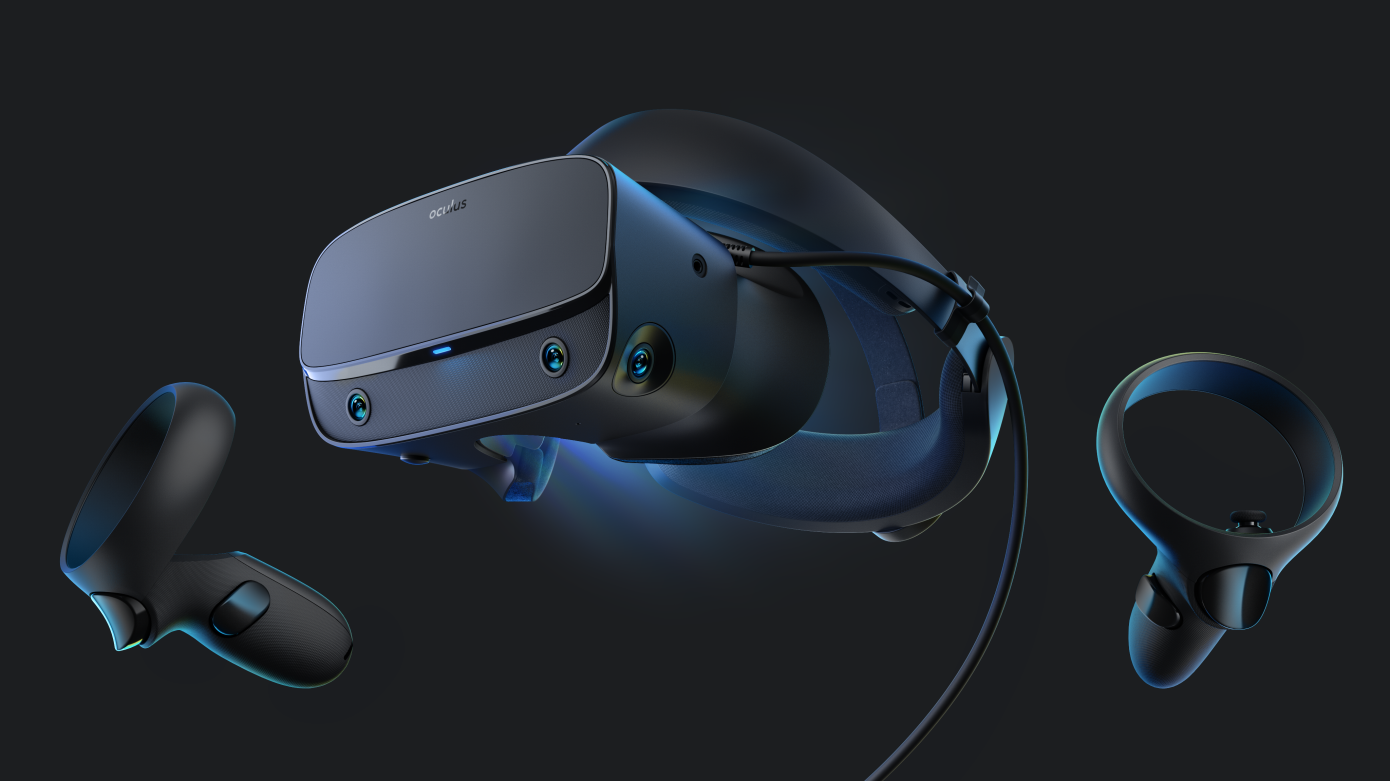Widely Anticipated Oculus Quest and Rift S to Ship May 21, Pre-orders Now Open
At its F8 developer conference yesterday, Facebook announced its new standalone Oculus Quest VR headset as well as its more powerful Oculus Rift S that tethers to a PC and which is a refresh of the Oculus Rift that was released way back in 2016. Both headsets have immediately gone on sale and will begin shipping from May 21. Both VR headsets will cost $399, a price set with an eye on the mass market.
The Oculus Rift S is a refresh of the Oculus Rift. Facebook had stated that it will not be a “Rift 2” or a major upgrade but a more modest refresh to the Rift. The Rift S replaces the tracking cameras in the old Rift with a more convenient inside-out tracking functionality, referred to as the Insight tracking in the Rift S. Add to the fact that Oculus supports some of the most ambitious virtual reality games and you can see why the Rift would still be a good buy, especially with its affordable pricing and high end specs.

The Oculus Quest headset has the specs that many would have wished for in 2016 when the industry churned out the first generation of consumer-focused virtual reality headsets like the HTC Vive and Oculus Rift.
The Quest is priced at $399 or at $499 depending on the amount of internal storage the buyer wants. As a wireless and fully self-contained virtual reality headset, Oculus Quest is not particularly unique. Facebook released the Oculus Go , a self-contained VR headset , in 2018 with a starting price of $199. However, the difference is that the Quest is a higher-end higher-spec virtual reality headset. The Quest headset will be targeting gamers who would wish to try virtual reality without the encumbrances of a bulky and beefy PC.
The Oculus Quest will also be the first virtual reality headset that will be more high-end, portable and affordable. A good combination for the mass market. Users don’t have to tether it to a PC and there is no need for base stations or external sensors making it fairly easy to set up and use. The Oculus Quest headset is capable of tracking the position and rotation of the wearer’s head and monitoring the movement of the hands through the Oculus’s Touch controllers. All of these functionalities enable the user to get a good sense of what they have immersed themselves into.

Both Oculus Quest and the Rift S will be shipping through the Oculus website as well as in various other retail partners such as Walmart, Best Buy and Amazon. Microsoft will be stocking the Rift S while GameStop will stock the Quest. Once the headsets are launched on May 21st, Microsoft will give demos for both headsets while Best Buy will provide a Quest demo.
For the Oculus Rift S, you will still need to tether to a gaming PC. However, the recommended specifications for the PC won’t be changing so if you are already using one for Rift, you can still use it for the Rift S without a PC upgrade. Gaming laptops are especially ideal as there won’t be a need for numerous ports for USB cameras.
You can play all the Rift games with the Rift S headset. The Quest on the other hand launches with approximately 50 titles including the rhythm game Beat Saber, painting app Tilt Brush, the action game Moss and the indie shooter Superhot. Many of these have been ported from the Rift. However, there are a few that will be new such as Vader Immortal and Dance Central.

Facebook plunged into the virtual reality space following its $2 billion acquisition of Oculus in 2014 which was a Kickstarter project back then. It released its first VR headset, the Oculus Rift in 2016 and in spite of a strong buzz and enthusiastic fan base, the original Rift headset failed to take off as expected. The virtual reality headset sales started picking up following Facebook’s release of the standalone Oculus Go headset.
Facebook and other key players in the VR space such as HTC Vive, Sony, Samsung and now Valve have repeatedly grappled with the question on what users will do with the headset to justify the costs and the investments. Where is the content? Unlike smartphones and tablets which have great utility value, a VR headset is not a must have and is something of a tech luxury. Virtual reality will only take off in a big way when the industry will be able to marry high performance high-spec virtual reality headsets with equally compelling experiences that buyers will want to use over time. That’s the conundrum the big players like Facebook, HTC, Sony, Samsung and Valve will have to unravel.
However, Facebook’s long quest to justify shelling billions on virtual reality hardware is finally bearing fruit and the company is coming up with new and innovative hardware and content ideas. The release of both the Quest and the Oculus Rift S solves the hardware question for the mass market which has been yearning for higher fidelity hardware at affordable pricing. Now it is possible to own powerful virtual reality headsets with high quality graphics, both tethered and standalone, that won’t cost you a fortune.
Both Oculus Quest and Oculus Rift S will not need external sensors to work, unlike the earlier models that relied on external base stations. Both headsets will instead use a system of cameras that have been fitted on the outside of the head-mounted devices (HMDs). The Oculus Quest has four such cameras that have been mounted on the rounded corners of the HMD’s faceplate.
The headsets have also been equipped with a suite of software that processes the data that has been collected by the cameras as well as the controllers so as to position the user in the real world and provide them with the virtual hands.
Rather than being tethered to a powerful computer, the Oculus Quest utilizes a built-in Qualcomm Snapdragon 835 chipset along with 4GB of RAM. It’s this design that makes it a standalone headset. The Oculus Rift S, on the other hand, must be tethered to the PC in order to function.
On the flip side, the 835 snapdragon chipset is fairly dated and has been used in some of the popular high-end smartphones such as the Samsung S8. In fact, some of the most current top-of-the-line smartphones are using the latest Snapdragon 855 chipset.
The Oculus Quest virtual reality headset comes in two versions; a 64GB version which costs $399 and a 128GB version which costs $499. At 572 grams, it’s slightly heavier than the Oculus S and also slightly smaller in size. The headset utilizes the OLED display panels which have a refresh rate of 72Hz and are capable of displaying 1440×1600 per eye. The refresh rate for the Quest is slight lower than that for the Rift S but it’s still superb resolution.
The Quest has a straight forward design with three Velcro adjustable straps which will create an open and elastic triangle of support. The HMD’s display has been wrapped around a fabric to provide users with a more comfy feel in contrast to the hard plastic used in most of the head-mounted displays. On the right underside of the display is a toggle for adjusting the volume. The right side of the headset also includes a switch for adjusting the interpupillary distance (IPD) which is the space between the pupils. On one side of the display, there is a power button while the other side has an input that can be used to charge the virtual reality headset with the USB cable included in the package.
Under the Hood
When on a flat surface, the Oculus Quest headset automatically goes on a sleep mode but will be active again, almost instantly, when you pick it up and put it on.
When a user slips the headset over their face, the first message they receive is one asking them to either confirm or change their guardian. The guardian is a software boundary that the user must set up so as to keep them within a safe physical boundary for the virtual experience: it ensures they don’t bump into walls, a couch or walk down the stairs when they are wearing head-mounted device and are inside a virtual reality experience. With the new system, it is fairly easy to set it up. There are also built-in cameras in the headset that will show the surroundings to the wearer via a static-filled black and white live image.
The boundary software will try and autodetect the floor and it does this with a considerably degree of accuracy. You will then be prompted to use one of its controllers in order to mark the boundaries on the floor around you. This works like a laser pointer and you mark it by drawing the “virtual line”. The line will transform into a wall that disappears and allows you to experience the VR without distractions. However, whenever you approach the boundary line or the invisible virtual wall, it will reappear to warn you that you are about to cross the virtual line and into the part of the room that is outside the boundary. If you go ahead and cross the virtual line anyway, it will turn red at the exact spot where you are crossing it. If you push your head past the boundary, you will see the real world in a hazy black and white focus. This hazy black and white environment will only disappear when you step back into the virtual space that you created by drawing the virtual line.
After you have established and confirmed your boundary, you will be immersed into a spacious modern living room that has floor-to-ceiling windows wrapping around much of the space. The virtual room also has bookshelves, a coffee table, a couch, a fireplace to the side and most importantly, the trendy play space that will be your new virtual playground. The feature in the room that will be most critical for your virtual experience is the floating menu which displays the options, the apps you have purchased as well as the store where you can access more apps and titles.
When you choose a preferred title, you will be plunged directly into the virtual reality experience.
Once you are inside, you can play any of the robust games that are available on Oculus Quest. If you have an idea of what you are looking for, you can take time to curate headset with the content that you wish to experience. The Quest will be launching with about 50 games and apps so you have quite a good selection to start with.
Verdict
There are lots of things that Oculus has done right. However, there are still also some downsides with the headset. Users familiar with the hardware specifications, for example, will not be too pleased with the fact that Oculus has used a dated Snapdragon 835 chipset instead of the more recent chipsets such as the 855 or even 840 and 850. The headset would have been even more attractive if Oculus had used some of the more cutting-edge chipsets. It’s even worse that the headset cannot be upgraded so users who purchase it will have to live with the chipset even as more powerful standalone headsets with cutting-edge chipsets roll into the market in the coming years. This is where the Oculus Rift S will have an advantage. Because it relies on your PC, you can always upgrade the processors, programs and RAM to get an elevated VR experience as time goes by. With the Quest, you will be stuck with both the processor and the RAM for good.
Some users have also reported that for people with smaller heads, the headset feels a little wiggly on the sides even when it is adjusted using the Velcro straps. It simply won’t fit squarely and securely if your head is a lil’ bit tiny. This might degrade the virtual reality experience as the headset is likely to slip when you are moving your arms and heads about and you will be forced to constantly fiddle with the headset so that it stays in place as you play some of the games.
The headset also exhibited more light-leak which is mostly due to the design and how the HMD rests on the face.
On the positive side, the Oculus Quest delivers on the promise. It’s an affordable headset with superb specs so it will certainly lower the cost of a virtual reality experience and allow more people to get on board.
The HMD has also come with plenty of software upgrades. There is a fun virtual reality introduction that will begin immediately you put on the VR headset and which gives you a walkthrough of VR. If you have never tried virtual reality, this intro will definitely come in handy.
The HMD provides users with the ability to share the screen on other platforms such as your phone. You can use the built-in options for recording videos in virtual reality, capturing screenshots or to stream live on platforms such as Facebook.
The Guardian setup is quick and seamless. You can take the Quest headset to any space and you will be able to setup in a matter of seconds and begin playing. The portability and the guardian feature allows you to work in all kinds of spaces ranging from fragile surroundings in small rooms to the wide outdoors.
Finally, there is a $40 carrying case which snugly holds all the gear including the headset, controllers and the charging gear. If you are considering packing your gear and heading far away or a to a friend’s for some shared VR experiences, then you can carry your gear in this aesthetically-pleasing pack. As Variety puts it, Oculus Quest has nailed “the sweet spot between functionality and cost”.
Apart from the Rift S and Quest, Valve has also opened its Index headset for pre-orders this week and will be shipping before July. The widely expected spring avalanche of new VR headsets has just begun with a bang!
https://virtualrealitytimes.com/2019/05/01/widely-anticipated-oculus-quest-and-rift-s-to-ship-may-21-pre-orders-now-open/https://virtualrealitytimes.com/wp-content/uploads/2019/03/The-Oculus-Rift-S-600x359.jpghttps://virtualrealitytimes.com/wp-content/uploads/2019/03/The-Oculus-Rift-S-150x90.jpgHardwareOculus QuestOculus Rift SVR HeadsetsAt its F8 developer conference yesterday, Facebook announced its new standalone Oculus Quest VR headset as well as its more powerful Oculus Rift S that tethers to a PC and which is a refresh of the Oculus Rift that was released way back in 2016. Both headsets have immediately...Sam OchanjiSam Ochanji[email protected]EditorVirtual Reality Times - Metaverse & VR
